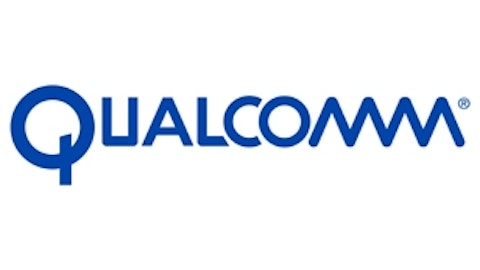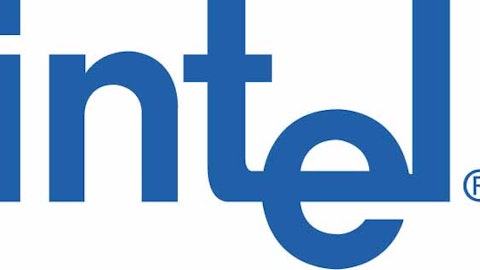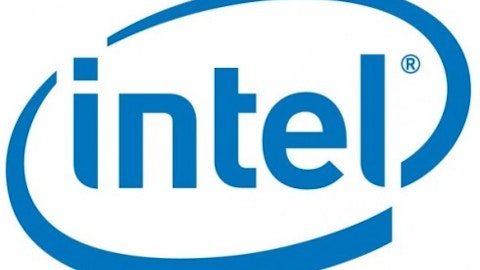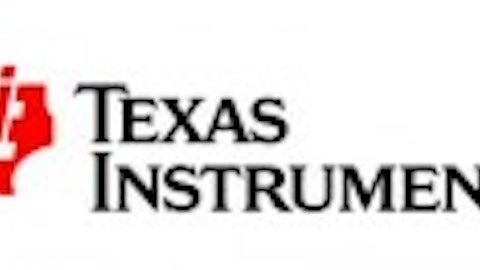Shares of ARM Holdings plc (ADR) (NASDAQ:ARMH) swung wildly on the morning after its 2013 Q2 earnings report, released on July 24. At market open the stock spiked to about $42.80, only to settle back by the end of the day to about $39.60, a change of almost 7.5%. It was a classic case of investors being initially excited by the report, only to have second thoughts after they digested it.
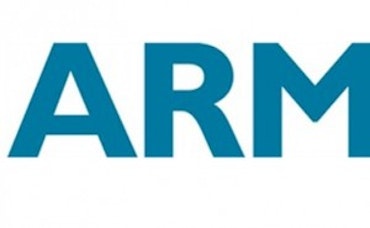
ARM Holdings plc (ADR) (NASDAQ:ARMH)’s year over year revenue growth was strong, however, at $264.3 million, up 24%. However, there are signs that ARM’s revenue growth, which is closely tied to ARM processor shipments through licensing, may be starting to slow, as the chart below shows.

After ARM’s 2012 Q4 earnings report, I made a couple of observations in my article “Does Arm Still Have Momentum?”, which bear repeating now that two quarters have gone by.
1) I observed that the surges in ARM’s share price in Q1 2011 and Q4 2012 correlated with announcements by Microsoft Corporation (NASDAQ:MSFT) of its Windows on ARM initiative at CES in January 2011 and the release of Windows RT, the version of Windows 8 that runs on ARM processors and Windows 8 Phone in October-November 2012. I inferred that investors expected Microsoft ARM devices to sell well and increase the demand for ARM processors. I also asserted, based on mostly circumstantial evidence at the time, that Microsoft Corporation (NASDAQ:MSFT)’s Windows on ARM initiatives would be disappointing and achieve little market share growth.
By now it’s apparent that Windows RT and Windows 8 Phone have not fueled a discernable acceleration in ARM processor shipments. According to IDC, 900,000 Surface tablets were sold in Q1, and some of these were Surface Pros with Intel Corporation (NASDAQ:INTC) processors. According to Gartner Reseach, about 6 million Windows Phones were shipped in Q1. Both numbers are relatively minuscule compared to total worldwide smartphone and tablet shipments in the quarter of 210 million and 49 million respectively.
2) I also observed that ARM and Intel Corporation (NASDAQ:INTC) were on a collision course in mobile devices as well as servers. Intel was preparing low power Intel Corporation (NASDAQ:INTC) processors that would compete in the tablet and phone space, while ARM was preparing more capable 64 bit processors to be used in low power servers.
For the most part the collision hasn’t happened yet. ARM’s 64 bit processor designs, dubbed the Cortex A50 series, have yet to enter production and probably won’t before next year. Most of the Intel Corporation (NASDAQ:INTC) processors capable of competing with ARM in tablets and phones won’t be available until Q4.
In this calm before the storm, some ARM investors may find it difficult to accept Intel Corporation (NASDAQ:INTC) as a serious threat. There was some indication of this in the jump in ARM’s share price following its Q1 earnings report. As can be seen in the chart above, revenue grew in lock step with processor shipment growth, while operating income grew faster than revenue as operating expenses were cut. And the Intel Corporation (NASDAQ:INTC) threat was just a dark cloud on the horizon.
It wasn’t until June that the Intel Corporation (NASDAQ:INTC) cloud drew suddenly closer and took tangible form that ARM investors began to take the threat seriously. By late June ARM shares had fallen from a high of about $50 on May 16 to about $35 on June 21.
The initial Intel threat took the form of the first of the 4th generation Core processors, often referred to as “Haswell.” In its most power efficient form, Haswell can be used in tablets and what Intel calls 2-in-1 convertibles, tablets with detachable keyboards. But the first Haswell processors were higher power chips for desktops and laptops, and weren’t suitable for tablets. The Intel threat once again seemed to abate as PC sales, and Intel’s PC processor sales, continued to decline. ARMH shares have edged upward since the end of June.
The Storm
ARM investors and the entire ARM ecosystem are about to witness the mobile computing equivalent of Shock and Awe when Intel unleashes their mobile processor assaults in the third and fourth quarters. Intel has two main weapons in its arsenal: the ultra low power “fanless” Haswell processors, and the Bay Trail line of Atom processors. Both use Intel’s 22 nm process, which shrinks the size of integrated circuits compared to the 28-32 nm process currently in use by ARM processor manufacturers. Both processor families will be more energy efficient than currently available ARM processors, as well as more computationally powerful.
The Haswell processors will go into more expensive tablets running Windows 8 Pro and will appeal to Windows users who want something more powerful in a tablet. Intel has targeted Bay Trail Atoms for mainstream consumer tablets with a price point around $200. These will be capable of running either Windows 8 or Android. At its Q2 conference call, Intel execs indicated that mobile device makers such as Acer, Samsung, etc. intended to offer the same Intel based hardware platforms in either Windows or Android configuration, and saw this as a way to lower development costs.
In my article on Intel’s Q2 earnings, I allowed that Intel mobile processors might well be cost disadvantaged compared to ARM. It’s difficult to tell at this point, but I suspect that Intel will price their mobile processors competitively, even if it means taking a loss on them.
Matters only get worse in 2014, when Intel brings their first processors to market using their even more advanced 14 nm process, which will start production this year in Q4, according to Intel. ARM foundries such as TSMC and IBM’s Common Platform partners Global Foundries and Samsung have all announced that they’re working on 14 nm processes of their own, but there’s no telling when they’ll be ready.
Intel’s success or failure may well come down to process advantage, something ARM has very little control over. ARM is doing what it can to help Common Platform with development tools, but can’t do very much for the foundries other than lend moral support. ARM’s fate may be in the hands of the ARM foundries.
The article ARM Holdings vs. Intel: The Calm Before the Storm originally appeared on Fool.com.
Mark Hibben owns shares of Intel. The Motley Fool recommends Intel. The Motley Fool owns shares of Intel. Mark is a member of The Motley Fool Blog Network — entries represent the personal opinion of the blogger and are not formally edited.
Copyright © 1995 – 2013 The Motley Fool, LLC. All rights reserved. The Motley Fool has a disclosure policy.

